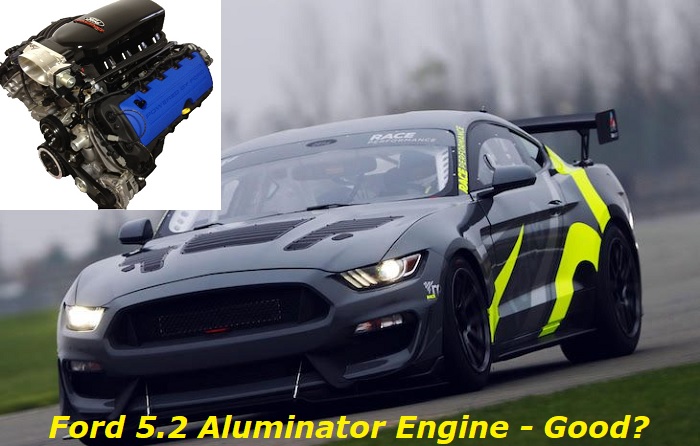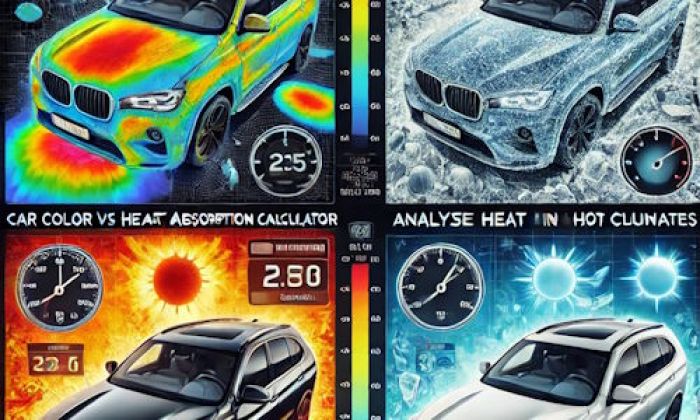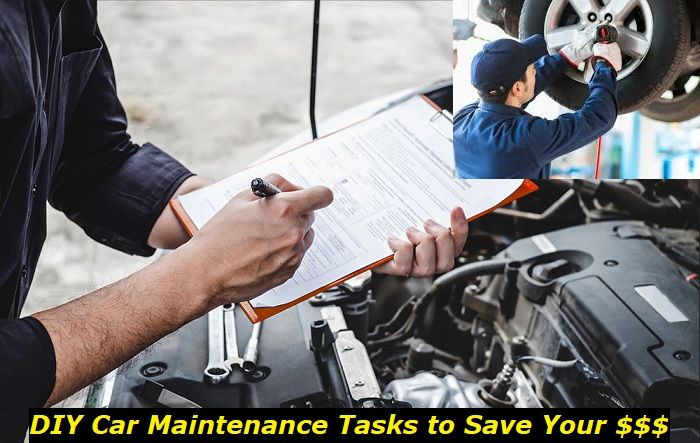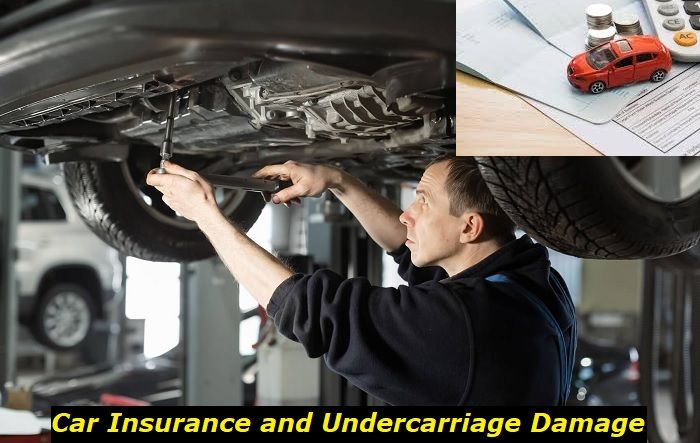Are you looking for one of the best performance crate engines available today? Then look no further than this beast from Ford Performance. It's packed with plenty to keep all car enthusiasts satisfied.
Key features and my opinion about the engine
- Production years:2010-now
- Average lifespan of V8 Aluminator:230,000-260,000 miles
- Fuel supply type:port injection
- Power range:580 hp
- Fuel efficiency:awful
- Engine block material:aluminum
- Engine reliability score:medium
- The most common problems:overheating, oil consumption, weak timing chain tensioners, weak piston rings.

Widely compatible
One highlight of this engine is that you can install it in a wide variety of different vehicles. Because the engine is made by Ford, it comes with a plethora of additional parts and accessories that make it widely compatible. Ford conveniently offers specific harnesses and PCMs to help mechanics get the most out of this engine.
Longevity
This performance crate engine is built by one of the biggest names in the business, Ford. Its longevity is sure to be competitive with almost anyone else on the market. Forward also offers a generous warranty and guarantee with their product.
Users of this engine boast about its durability and ability to take a beating, especially with regard to racing.
Reviews
Owners of this vehicle rave about its quality and performance. It is sure to be fast enough to satisfy just about anyone. As a naturally-aspirated engine, it is without a supercharger. Users state that having over 500 horsepower makes up for the lack of one.
Users also say that the machine is easier to install, particularly concerning the wiring system involved.
Ford Performance
Whether you're a gearhead or just a casual observer, you have to admire Ford's performance department. They take some of the best cars on the market and make them even better. One of the most notable examples is the Shelby GT350 Mustang.
This car takes everything that makes the Mustang great and cranks it up to eleven. The 5.2L V8 engine produces an incredible 526 horsepower, making it one of the most powerful Mustangs ever made. And that's just the tip of the iceberg.
The Shelby GT350 also features improved suspension, brakes, and tires, making it a true track-ready car. If you're looking for top-tier performance, Ford is always worth checking out.
Dual Overhead Cam
First off, it features a dual overhead cam design. The dual overhead cam, or DOHC, design is a popular choice for many modern engines. This configuration can offer several advantages over a traditional single overhead cam, or SOHC, design.
One benefit of a DOHC setup is that it can allow for more accurate valve timing. With two camshafts, each operating one bank of valves, the timing of the opening and closing of the valves can be more precisely controlled. This can lead to better engine performance and efficiency.
Additionally, a DOHC design can allow for larger valves and higher lift ratios than a SOHC design. As a result, a DOHC engine can often produce more power than its SOHC counterpart. There are some drawbacks to the DOHC design as well, however.
One downside is that it can be more complex and expensive to build. Additionally, DOHC engines typically require more maintenance than SOHC designs. Overall, though, the DOHC design provides many benefits that make it a popular choice for many modern engines.
Crate engine
This crate engine is a complete engine that is sold as a single unit. Most crate engines are used to replace the existing engine in a car or truck. Crate engines are typically high-performance engines that have been carefully designed and built by experts.
As a result, they often offer a significant increase in power and torque over the stock engine. Crate engines can be expensive, but they offer a great way to get the most out of your vehicle.
When shopping for a crate engine, it is important to consider the application for which it will be used. For example, if you plan to use the engine for street racing, you will need an engine that is designed for high performance. On the other hand, if you simply want to replace the engine in your daily driver, you will not need an extremely powerful engine.
Instead, you can focus on finding an engine that offers good fuel economy and reliability. no matter what your budget or needs may be, there is a crate engine out there that is right for you.
Naturally aspirated
This naturally aspirated engine is an internal combustion engine in which oxygen intake depends on atmospheric pressure and does not have any boosted air flow through supercharging or turbocharging. In a naturally aspirated engine, air enters through the intake and is compressed by the pistons.
The air/fuel mixture is then ignited by the spark plugs, creating the power to turn the crank. Naturally aspirated engines are typically less powerful than their forced-induction counterparts, but they often offer better fuel economy and more linear power delivery.
As a result, naturally aspirated engines are still found in many small cars and trucks. However, with the advent of turbochargers and superchargers, naturally aspirated engines are becoming increasingly rare.
Hand-built
This hand-built engine is one where each component is individually crafted and fitted together by hand, as opposed to being mass-produced on an assembly line. This type of engine usually has a higher quality and performance than a factory-built engine, as it benefits from the added care and attention of its builder.
In addition, a hand-built engine can be tailor-made to the specific needs of its owner, making it perfectly suited to their vehicle and driving style. However, the downside of a hand-built engine is that it can be very expensive, as the labor required is significantly higher than for a standard engine.
Nevertheless, for many car enthusiasts, the benefits of a hand-built engine are more than worth the cost.
Aftermarket use
Aftermarket use of engines refers to the modification of an engine for use in a different application than what it was originally intended. This could include using a car engine in a boat, or a truck engine in a race car.
There are many reasons why someone might choose to do this, including performance and cost. While it is possible to purchase an aftermarket engine that is already modified for your specific needs, some people prefer to do the work themselves.
This can be a challenging but rewarding process, as you have the opportunity to customize your engine to exactly your specifications. Whatever your reason for wanting an aftermarket engine, there are many options available to you.
CNC-ported heads
The CNC-ported cylinder heads of this engine offer a number of advantages over stock heads. First, the porting process allows for more precise shaping of the intake and exhaust ports, which can lead to improved airflow and enhanced performance.
Additionally, CNC ported heads can be custom-designed to match the specific requirements of an engine, which can further improve performance. Finally, CNC ported heads tend to be lighter than stock heads, which can help to reduce weight and improve fuel economy.
Although they typically cost more than stock heads, CNC ported cylinder heads offer a number of benefits that make them well worth the investment.
Cross-plane crankshaft
A cross-plane crankshaft is a type of crankshaft that is used in some V8 engines. The cross-plane design helps to cancel out the "second-order" vibrations that are produced by the firing of the cylinders.
This results in a smoother and more balanced engine, which can improve performance and fuel efficiency. The cross-plane crankshaft is also known for its distinct sound, which is often described as a "burble" or "growl."
This unique sound is caused by the uneven firing of the cylinders, and it has made the cross-plane crankshaft a popular choice among gearheads and automotive enthusiasts.
Break in the engine
Even if you just bought a brand-new car, it's still a good idea to break in the engine before putting it through its paces. By following a few simple guidelines, you can help ensure that your engine has a long and healthy life. One of the most important things to remember is to gradually increase the speed and load on the engine.
For the first 500 miles or so, it's best to avoid putting too much strain on the engine. This means avoiding extended periods of high speed or heavy acceleration. Once the engine has been broken in, though, it will be able to handle more stress.
In addition to extending the life of the engine, breaking it in correctly can also improve fuel efficiency and performance. So even though it may seem like a waste of time, taking a little extra care during the break-in period can pay off in the long run.
About the authors
The CarAraC research team is composed of seasoned auto mechanics and automotive industry professionals, including individuals with advanced degrees and certifications in their field. Our team members boast prestigious credentials, reflecting their extensive knowledge and skills. These qualifications include: IMI: Institute of the Motor Industry, ASE-Certified Master Automobile Technicians; Coventry University, Graduate of MA in Automotive Journalism; Politecnico di Torino, Italy, MS Automotive Engineering; Ss. Cyril and Methodius University in Skopje, Mechanical University in Skopje; TOC Automotive College; DHA Suffa University, Department of Mechanical Engineering






Add comment